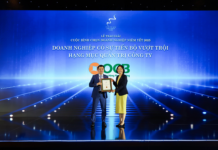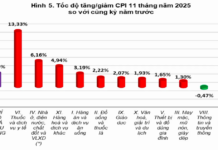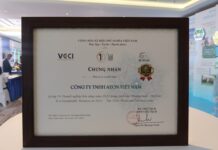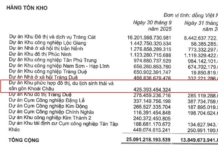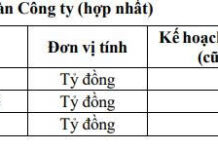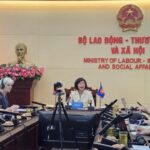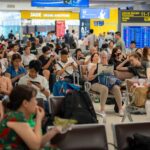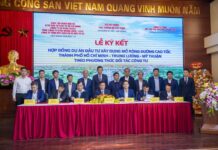Based on this provision, each year, relevant ministries and sectors propose a plan for the Lunar New Year holiday, suggested by the Ministry of Labor, Invalids, and Social Affairs (MOLISA). After compiling the opinions, MOLISA submits the plan to the Prime Minister for approval.
For the Lunar New Year holiday in 2025, the year of the Wooden Dragon, MOLISA has proposed a nine-day continuous holiday for officials, employees, and laborers in administrative agencies, public service units, political organizations, and socio-political organizations.

Many businesses give employees a long Tet holiday
Based on the legal provisions and the holiday schedule for officials and employees, non-state enterprises will calculate the holiday schedule for their employees, taking into account production conditions and the wishes of the employees.
However, considering the convenience of employees returning to their hometown for the New Year, especially those from faraway provinces, as of now, several enterprises have decided on an extended holiday schedule for their employees, ranging from 10 to 15 days.
In addition to the days off as stipulated, these enterprises will either provide additional paid days off, arrange for employees to work extra days before and after the holiday, or count the extra days as annual leave.
Regarding the option of counting the extra days as annual leave, many employees have expressed confusion about whether companies are allowed to deduct these days from their annual leave balance.
Article 113, Clause 4 of the 2019 Labor Code states: “The employer shall have the responsibility to decide on the annual leave schedule after consulting the employees and must inform them in advance. Employees can agree with the employer to divide their annual leave into several periods or accumulate it for a maximum of three years.”
According to this provision, enterprises can deduct the extra holiday days from the employees’ annual leave balance if they have consulted the employees and informed them in advance.
Can Employees Take a 3-Year Accumulated Vacation?
The employee is entitled to annual leave, which can be negotiated with the employer to be taken in multiple periods or all at once, with a maximum accumulation of 3 years’ leave at one time.
Migrant Workers: Unlocking the Solution to Labor Shortages
Deputy Director of the Department of International Cooperation, Ministry of Labour, Invalids and Social Affairs (MoLISA), asserted that migrant workers will be the “key” to addressing the labour shortage issues faced by ASEAN countries in the future due to aging populations and increasing healthcare demands.
The Latest Update: Lunar New Year Holiday Plans for 2025
The Ministry of Labour, Invalids and Social Affairs has proposed a schedule for the Lunar New Year holiday in 2025. According to the proposal, employees in Vietnam will enjoy a 5-day break, along with the regular 4-day weekend, resulting in a potential 9-day holiday celebration for the Lunar New Year festival.
Unemployment Benefits: A Proposed Increase to 75% – What’s the Government’s Stance?
Unemployment insurance is a safety net designed to provide temporary financial support to individuals who have lost their jobs. It serves as a crucial buffer, offering a portion of one’s previous income for a limited period, recognizing that unemployment can happen to anyone and helping them bridge the gap until they secure their next opportunity.






